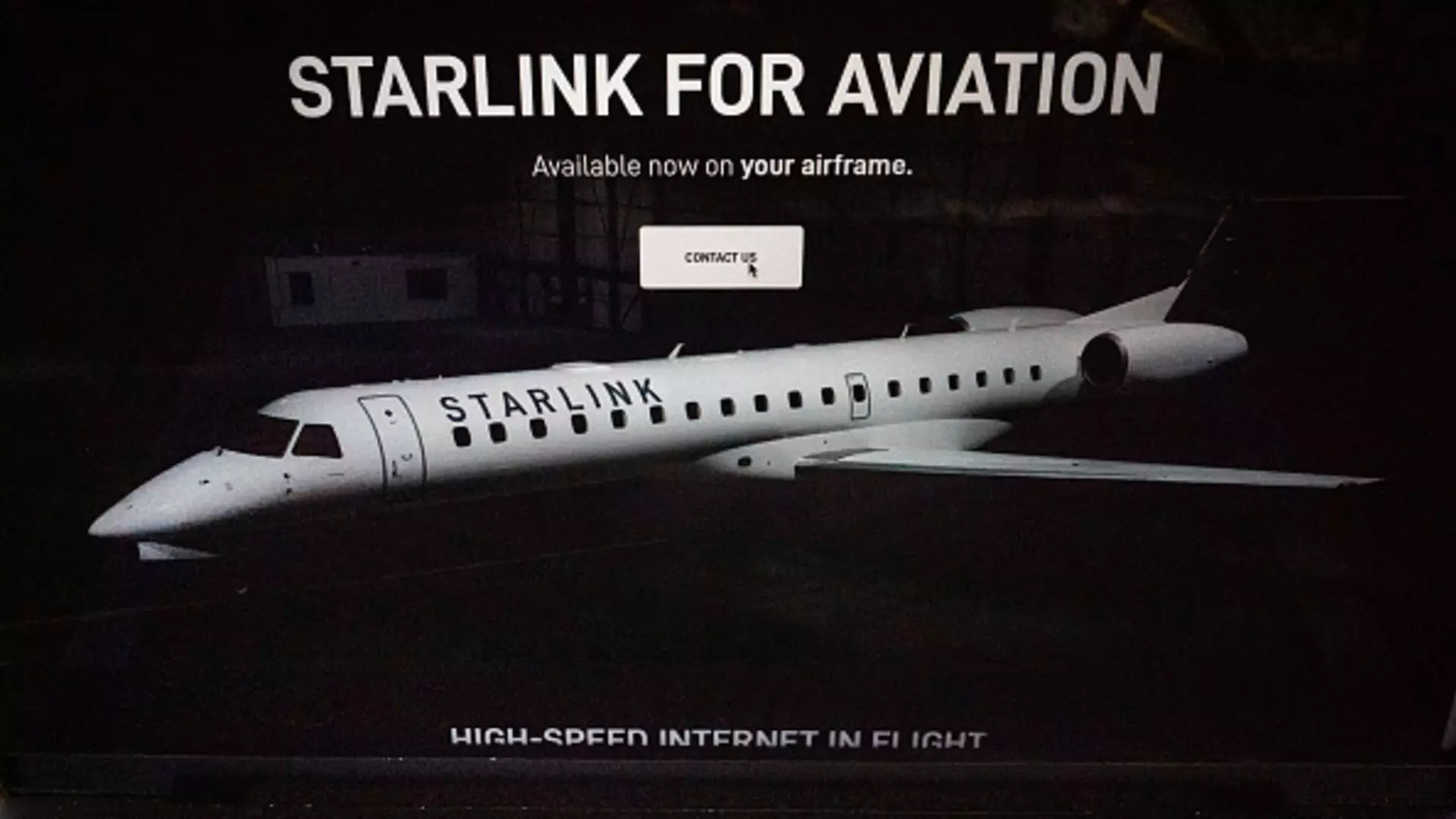In a significant development for air travel, SpaceX has managed to expand its Starlink network dramatically, securing a substantial deal with United Airlines that nearly doubles its backlog of in-flight Wi-Fi orders. This surge in contracts illustrates a transformative shift in the aviation industry, where connectivity is quickly becoming a critical component of the passenger experience. With over 2,500 aircraft now under contract, the implications of this deal extend far beyond just adding another Wi-Fi provider to the cabin. It sets a precedent for what passengers can expect from their in-flight experience in the coming years.
SpaceX’s foray into the in-flight connectivity (IFC) market is reshaping airline operations across the globe. The deal with United, which will see Starlink installed on more than 1,000 planes without any additional charges for customers, is particularly ambitious. This shift will effectively displace existing providers such as Viasat, Panasonic, Thales, and Gogo, establishing Starlink as a leader in the burgeoning sector of satellite-based internet services. The strategic choice to eliminate charges for Wi-Fi access is a calculated move, aimed at attracting high-end customers while maintaining competitive advantages against rivals, particularly as airlines vie for market share.
As of now, approximately 6,400 Starlink satellites orbit the Earth, providing internet service to over 3 million customers across 100 countries. Nick Galano, the director of Starlink aviation sales and partnerships, emphasized the enormous capacity offered by this satellite constellation, boasting that it can deliver more than 300 terabits per second— a figure that is approximately 100 times greater than what existing legacy systems provide. This remarkable capacity is not just a number; it has real implications for improving connectivity for passengers. The promise of uninterrupted service as airlines navigate through remote areas can greatly enhance the overall travel experience.
One of the main challenges for airlines when adopting new technology is the installation process. Galano explained that SpaceX is focused on streamlining antenna installations on aircraft, a procedure known as retrofitting. Traditionally, retrofitting has required airlines to take planes out of active service for several days at a time, which can eat into operational efficiency and customer satisfaction. SpaceX aims to reduce installation time to less than a day, a feat it has already demonstrated with Hawaiian Airlines and JSX. In contrast, other airlines, like Delta, report installation processes that average around three days. This innovation in the installation process could significantly impact how quickly airlines can upgrade their services, thus accelerating the industry’s shift toward enhanced connectivity.
As airlines increasingly recognize the need for quality in-flight connectivity, the race is on to secure contracts that not only improve customer experience but also bolster customer loyalty. Delta Airlines has reported substantial gains in its frequent flyer program by offering complimentary Wi-Fi access, a tactic aimed at attracting high-end customers. The importance of seamless internet access is now evident in the competitive strategies of major airlines. As United and Delta position themselves to offer superior in-flight services, the pressure on other airlines to follow suit, particularly with SpaceX’s advanced technology, is mounting.
As SpaceX continues to launch satellites to expand the Starlink network, the aviation industry is poised for a dynamic transformation. The ability to provide stable, high-speed internet at cruising altitudes can redefine air travel, influencing consumer preferences and operational efficiencies alike. Not only does this development promise to elevate the travel experience for millions of passengers, but it also highlights the rapidly evolving relationship between technology and consumer service in the aviation sector. Airlines are no longer just carriers; they are increasingly viewed as tech-savvy companies that prioritize passenger satisfaction and modern conveniences.
With its ambitious initiatives, SpaceX is indeed setting a new standard for in-flight connectivity, positioning the company—and the airlines it partners with—at the forefront of an industry-wide evolution. The anticipated improvements to in-flight internet service signal a promising future where connectivity becomes a cornerstone of the customer experience in aviation.

Leave a Reply